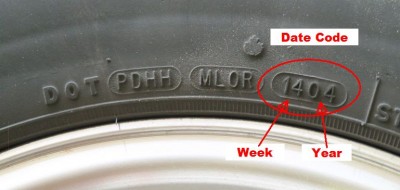Summertime means RVing season is in full tilt. We’ve all got somewhere to be and are in no hurry to get there. So it’s easy to get caught up in the clear skies and cookouts, but smart RVers know that, even when enjoying the best Mother Nature has to offer, it pays to be prepared for the worst. Primetime RV season also coincides with the Storm Season. And if last year taught us anything, it’s that storms can hit hard and heavy and sometimes without warning. So let’s discuss some of the best ways to stay safe during storms and what steps to take to be prepared if bad weather comes calling at your door.
Stay in Touch
During the storm season, information and communication are paramount. A heads-up when bad weather may be headed your way could mean the difference between getting to safety and finding yourself in the middle of a storm’s path. That’s why it’s a good idea to keep a weather alert radio with you and can tuned in all NOAA national weather channels, giving you accurate, up-to-date weather conditions and alerts. Remember to take watches and warnings seriously – especially evacuation warnings in coastal areas where hurricanes may hit – and follow instructions given by the National Weather Service and local authorities during storms to ensure your safety.
Plan Ahead
Storms can come and go very quickly, so it pays to always have a plan of action. If you are at your house, designate an area (preferably an interior room or closet on the building’s lowest floor) to go to during severe weather. When checking in at a campground, familiarize yourself with the facilities and find buildings that would be suitable shelters if a tornado or other strong storm were to arise. If you have questions, a campground worker can usually help you to identify where to go in case of emergencies. If you are on the road when severe storms (particularly tornados or storms with strong straightline winds) roll into your area, always pull over and evacuate the RV immediately. Take cover in a sturdy building, ditch or low lying area. If there are items that you may need to take with you, such as essential medications, store them close at hand.
It is also wise to plan for a storm’s aftermath. A portable generator adds a lot to comfort and convenience in the event that you are faced with prolonged power outages.
Stock Up on Basics
Stocking fresh water and basic foodstuffs can be a lifesaver in the event that severe damage forces you to remain at home or in your shelter for a prolonged period of time. It’s a good idea to invest in propane and propane appliances for cooking, heating and lighting. Prepare a Storm Emergency Kit, containing gear that you may need throughout the immediate course of a storm. Battery-powered flashlights, are the cornerstones of a good storm kit because most severe storms knock out power supplies, leaving you in the dark to fend for yourself. Stock your storm kit with emergency blankets like and ponchos; these items store compactly and can provide a great deal of warmth when needed. A small first aid kit is also a great idea to tuck away in your storm kit, just in case you need to treat any minor injuries that may arise. A three-day supply of any essential medications your family requires should also be included in your kit. Don’t forget to have personal comfort and hygiene items on hand. Sleeping bags, and camp pillows can turn a storm shelter floor into a cozy spot for a good night’s sleep. If fresh water is limited or not available, Fresh Bathing Wipes and Hand Sanitizer also improve comfort and help protect against disease. We can’t control what Mother Nature sends our way, but at least we can be prepared for it.



